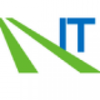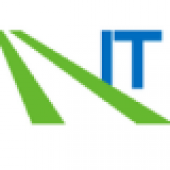Software-Defined Storage Products: IT Pro Perspective
Users weigh in on pros and cons of Dell EMC ScaleIO, HPE StoreVirtual, IBM Spectrum Virtualize, Red Hat Ceph, and StorPool.
June 26, 2018

Software-defined storage describes storage products in which the storage virtualization separates storage management software from the underlying hardware. In some cases, SDS products may offer storage resource pooling, abstraction, management workflow automation, and artificial-Intelligence (AI)-based resource allocation. SDS may also enable use of commodity hardware.
This article offers insight into some of the top software-defined storage products, according to online reviews by enterprise users in the IT Central Station community. The products reviewed include Dell EMC ScaleIO, HPE StoreVirtual, IBM Spectrum Virtualize, Red Hat Ceph, and StorPool.
What do enterprise IT pros actually think about these products? Here, users offer a balanced view of their benefits and shortcomings.
Dell EMC ScaleIO
Vladimir G., infrastructure services system administrator, wrote about the advantages he sees with Dell EMC ScaleIO:
“Automatic rebalancing is the feature saving administration time, and also auto rebuilding. Enterprise storage IOPS limiting is also good. The primary goal was to have a storage solution where you do not have to invest a large amount of money just to start, and have idle resources, yet have a locally supported enterprise solution on commodity hardware. In other words, have a pay-as-you-grow, horizontally scaled solution, where front-end controllers are not the bottleneck.”
He also cited several areas where the product could improve:
“There is no built-in system for viewing history data, such as volume IOPS. We have to provide graphing by Prometheus and Grafana, which would be a good new feature in ScaleIO. The next good new feature would be moving volumes between different storage pools, e.g., from a SAS pool to a SSD pool. It would be nice to set minimum IOPS per volume, besides just the maximum, to be able to satisfy this demand from customers out of the box, not by calculating number of disks, etc. It would be nice to have better integration with monitoring and other vendor provisioning and orchestration tools. I am aware that this is a hard-to-achieve task, where it is necessary for product not to be proprietary and to become industry standard.”
Joe H., R&D engineer at a tech company, highlighted the product's benefits:
“The ScaleIO UI has been working with storage for a long time. Therefore, they know how to clearly present any important data, including data flow and each drive's IOPS/bandwidth, and allow the user to easily monitor bottlenecks and problems, especially the rebuild and rebalance status of child objects. It controls them, as well as maintaining them well.”
He also said if ScaleIO "could introduce a write cache feature, the product would be perfect overall.”
HPE StoreVirtual
Matthew A., system and network administrator at a non-tech company, described what he sees as HPE StoreVirtual's valuable features: “Ease of carving out storage and the seamlessness behind the scenes of block management. I just let it do its thing. I don't worry too much about it.”
An IT manager for infrastructure at a government agency who goes by the handle InfraITMgr243 said the product has benefitted his organization:
“StoreVirtual has been real good for us. We started with the original P4300 LeftHand SANs before they became StoreVirtual. What I love about those is the two nodes and the mirroring back and forth, and you can't lose anything. It's very solid, and we haven't really had any trouble with those either. We have a newer StoreVirtual that we've connected to one of the C3000 Blade Enclosures and it runs well. We lost a system board once and we lost a couple of servers, but we were able to bring everything back. Equipment-wise, it allows us to do all our work. We're real happy with that.”
Benoit H., WIS system engineer at a paper and forest products company, offered thoughts on how HPE StoreVirtual could improve: “Features like data deduplication would be great because in the end, this solution requires a lot of raw disk space because of the use of RAID5 on the hardware and RAID1 on the network.”
Philip S., solutions engineer at an insurance company, would like to see a new user interface:
“The user interface needs to be updated. It's getting kind of long in the tooth, and the user interface makes it look a lot more complex than it actually is to manage, and I think that you can mask a lot of that with a refresh of the user interface. While HPE has created a new HTML5 UI for the HyperConverged 380, it is not available to the rest of the StoreVirtual population.”

software.jpg
IBM Spectrum Virtualize
Craig J., storage administrator at a retailer, described the benefits of IBM Spectrum Virtualize for his company:
“The product helps us to manage our storage in a way that allows us to put different frames inside or out of our storage infrastructure and migrate. The benefits are that it speeds up provisioning of the storage across different tiers and allows a small team to manage that function, for many petabytes of data.”
A storage engineer for a healthcare company who goes by the handle StorageEc5c3, also likes the software:
“It gives us a lot of flexibility and ease of management. We have all the tools in one place. We pretty much do all our storage using the Spectrum Virtualize. It makes it really easy for us to manage all our storage. It gives us the flexibility to move things in between these. I think a lot of the benefit is just the ease of use of the tool itself.”
But a storage admin at a financial services firm that uses the handle StorageA62f0 cited drawbacks with the product:
“There is third site replication. Right now, we're limited in our ability to migrate data between clusters. Like I said, we had to scale wide rather than tall and continue to protect our data while we migrate. Additionally, if we wanted to set up a third site for additional DR, we don't really have a good option for that.”
Joshua M., technical analyst III at a healthcare company, also cited some shortcomings with Spectrum Virtualize:
“The feature that's kind of missing is getting us up to the point where we can help the application owners see where their data is at, understand it, and potentially help us breakout. We've used easy tiered functions in the pools, so we're trying to help step that storage down. If they can get visibility somehow into that data, help us further break that down, or better tier and separate out their data, that would be helpful.”
Red Hat Ceph
Anthony D., a senior software engineer, praised the community aspect of Ceph:
“By being open source, Ceph is not tied to the whim or fortunes of any one vendor. The community of Ceph code contributors and admins is large and active. Ceph’s ability to adapt to varying types of commodity hardware affords us substantial flexibility and future-proofing.”
Diego W., founding partner tech lead and DevOps consultant at a tech services company, values Ceph for its reliability. "I have experienced failures and human mistakes. However, Ceph was able to recover automatically the data with a special procedure," he wrote.
However, Flavio C., senior information technology specialist at a tech consulting company, said he sees room for improvement:
“In the deployment step, we need to create some config files to add Ceph functions in OpenStack modules (Nova, Cinder, Glance). It would be useful to have a tool that validates the format of the data in those files, before generating a deploy with failures.”
George P., systems engineer at a marketing services firm, highlighted a challenge for Ceph:
“Ceph lacks a little bit only in performance. It needs to scale a lot and needs very fast and well-orchestrated/configured hardware for best performance. This not a downside though, it is a challenge. Ceph only improves the given hardware.”
StorPool
Suha O., CEO at a tech company, gave high marks to StorPool:
“StorPool is a software-only solution with practically unlimited expansion capabilities. Its performance is very high. We were able to replace our SSD-only local storage systems without any performance penalty. Its price/performance is very high!”
He also suggested an improvement: “It would be good if, with next releases, StorPool provide a better GUI for monitoring and statistics. This would make our experience even better and complete.”
Richard L., a company president, likes StorPool's manageability: “Managing StorPool is much simpler than our previous storage system, especially having a CLI option which our previous storage system was lacking.”
Maria R., head of IT services operations center at a communications service provider, said a better interface would help. “At times we need to check the disks and do some minor operations. A friendlier user interface would be useful in such cases.”
To learn more about SDS solutions, download IT Central Station’s SDS Buyer’s Guide based on real user reviews.
About the Author
You May Also Like




